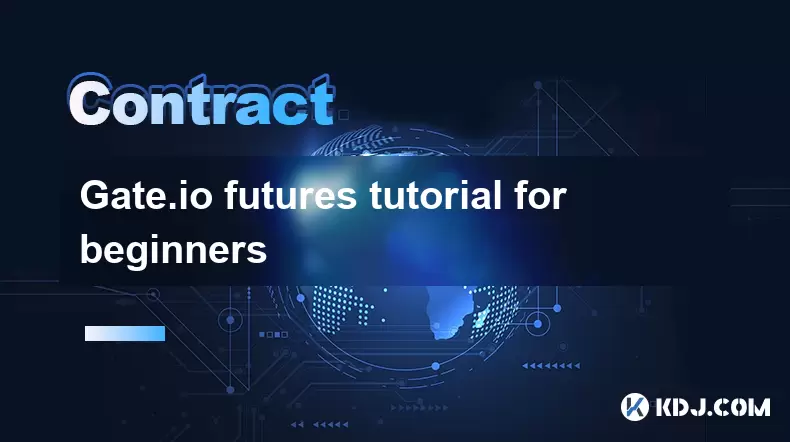-
 Bitcoin
Bitcoin $117700
-0.03% -
 Ethereum
Ethereum $3805
0.49% -
 XRP
XRP $3.098
-1.00% -
 Tether USDt
Tether USDt $1.000
0.03% -
 BNB
BNB $792.8
-1.72% -
 Solana
Solana $177.9
-1.95% -
 USDC
USDC $1.000
0.02% -
 Dogecoin
Dogecoin $0.2202
-1.55% -
 TRON
TRON $0.3278
-2.92% -
 Cardano
Cardano $0.7641
-2.43% -
 Hyperliquid
Hyperliquid $42.21
-2.68% -
 Sui
Sui $3.758
-1.58% -
 Stellar
Stellar $0.4080
-3.21% -
 Chainlink
Chainlink $17.75
-0.33% -
 Bitcoin Cash
Bitcoin Cash $591.8
4.96% -
 Hedera
Hedera $0.2561
-3.09% -
 Avalanche
Avalanche $23.34
-4.24% -
 Litecoin
Litecoin $110.7
1.96% -
 UNUS SED LEO
UNUS SED LEO $8.956
-0.01% -
 Toncoin
Toncoin $3.410
0.79% -
 Ethena USDe
Ethena USDe $1.001
0.03% -
 Shiba Inu
Shiba Inu $0.00001288
-1.82% -
 Uniswap
Uniswap $10.07
-2.06% -
 Polkadot
Polkadot $3.807
-2.27% -
 Monero
Monero $308.2
-2.15% -
 Dai
Dai $1.000
0.03% -
 Bitget Token
Bitget Token $4.521
-0.30% -
 Pepe
Pepe $0.00001134
-1.52% -
 Cronos
Cronos $0.1457
0.65% -
 Aave
Aave $274.9
-2.47%
Gate.io futures tutorial for beginners
Gate.io futures let you trade crypto like Bitcoin with up to 100x leverage—ideal for hedging or profiting from price swings, but risky for beginners.
Jul 30, 2025 at 03:28 pm

What Are Gate.io Futures?
Gate.io futures are financial derivatives that allow traders to speculate on the future price of cryptocurrencies like Bitcoin (BTC), Ethereum (ETH), and others. Unlike spot trading, where you buy and hold an asset, futures let you profit from both rising and falling markets. This makes them ideal for advanced strategies such as hedging or leverage trading. Futures contracts on Gate.io come with up to 100x leverage, meaning you can control a large position with a relatively small amount of capital—though this also increases risk.
How to Set Up a Gate.io Account for Futures
Before trading futures, you must create and verify your Gate.io account:
- Go to [gate.io](https://www.gate.io/) and click “Sign Up.”
- Enter your email, set a strong password, and complete email verification.
- Enable two-factor authentication (2FA) using Google Authenticator for security.
- Complete KYC (Know Your Customer) verification by uploading your ID—this is required to access futures trading.
- Once verified, log in and navigate to the “Futures” section under the “Derivatives” tab.
Understanding the Gate.io Futures Interface
The futures trading interface may look complex at first, but each section serves a specific purpose: - Market Data Panel: Shows price charts, order book, and recent trades. This is where you analyze price movements.
- Order Entry Panel: Located below the chart. You can place limit, market, or stop orders here.
- Position Panel: Displays your open positions, including entry price, liquidation price, and unrealized P&L.
- Margin Mode Toggle: Choose between Cross Margin (uses entire wallet balance as collateral) or Isolated Margin (only the allocated margin is at risk).
- Leverage Slider: Adjust leverage from 1x to 100x. Beginners should start with 5x or 10x to minimize risk.
Placing Your First Futures Trade on Gate.io
Follow these steps to execute a long (buy) position: - Select the futures contract you want—e.g., BTC/USDT perpetual.
- Choose Isolated Margin and set leverage to 5x.
In the order panel, select “Limit” or “Market” order type:
- For a limit order, enter your desired entry price and quantity.
- For a market order, enter only the quantity—you’ll get filled immediately at the best available price.
- Click “Buy Long” to open the position.
- Monitor your position in the “Positions” tab. Your liquidation price will update in real-time based on market movement.
To close the trade:
- In the same position row, click “Close” or place an opposite order (e.g., “Sell” if you’re long).
- Confirm the action—your profit or loss will be settled instantly in your futures wallet.
Managing Risk and Avoiding Liquidation
Liquidation happens when your position’s losses exceed your margin. To avoid this: - Always set a stop-loss order when opening a trade—it limits potential losses.
- Keep your leverage low as a beginner—5x to 10x is safer than 50x or 100x.
- Watch the liquidation price displayed in your position panel. If the market approaches it, consider reducing position size or adding margin.
- Use the “Add Margin” button in the position panel to increase collateral if the market moves against you.
- Never risk more than 5% of your total futures balance on a single trade—this is a key risk management rule.
Transferring Funds Between Spot and Futures Wallets
Gate.io separates spot and futures balances for security. To move funds: - Click your profile icon in the top-right corner.
- Select “Wallet” > “Futures Wallet.”
- Click “Transfer” next to your preferred coin (e.g., USDT).
- Choose “From: Spot” and “To: Futures.”
- Enter the amount and click “Confirm.”
- This transfer is instant and does not incur fees.
- To move funds back, repeat the process and select “From: Futures” to “To: Spot.”
Frequently Asked Questions
Q: Can I trade Gate.io futures without completing KYC?
No. KYC verification is mandatory to access futures trading on Gate.io. This is required for compliance with anti-money laundering (AML) regulations.Q: What happens if my position gets liquidated?
If liquidation occurs, your position is automatically closed at the liquidation price. You lose the margin allocated to that trade, but with Isolated Margin, your other funds remain safe.Q: How do I see my trading fees for futures?
Go to the “Futures” section, click “Account” in the top menu, then “Fees.” Gate.io uses a maker-taker fee model—makers (limit orders) pay lower fees than takers (market orders).Q: Is there a demo or paper trading mode on Gate.io?
Currently, Gate.io does not offer a built-in paper trading feature for futures. However, you can simulate trades manually using a spreadsheet or test small positions with real funds to practice risk management.
Disclaimer:info@kdj.com
The information provided is not trading advice. kdj.com does not assume any responsibility for any investments made based on the information provided in this article. Cryptocurrencies are highly volatile and it is highly recommended that you invest with caution after thorough research!
If you believe that the content used on this website infringes your copyright, please contact us immediately (info@kdj.com) and we will delete it promptly.
- Retail, Crypto, Visibility: Decoding the Signals in Today's Market
- 2025-07-31 12:31:08
- Bitcoin, Altcoin Selloff, and the FOMC Decision: A Crypto Market Rollercoaster
- 2025-07-31 12:35:33
- Cold Wallet vs. MetaMask: A Crypto Wallet Revolution?
- 2025-07-31 10:30:57
- Bitcoin Casinos in 2025: Instant Payouts and Welcome Bonuses
- 2025-07-31 10:50:33
- Meme Coins in 2025: Token Burns and the Quest for Moonshots
- 2025-07-31 10:50:33
- Unlocking Value: A Deep Dive into Random Year 1 oz Krugerrand Gold Coins
- 2025-07-31 10:57:21
Related knowledge

Why is my Bitstamp futures position being liquidated?
Jul 23,2025 at 11:08am
Understanding Futures Liquidation on BitstampFutures trading on Bitstamp involves borrowing funds to open leveraged positions, which amplifies both po...

How to report Bitstamp futures for taxes?
Jul 30,2025 at 08:35am
Understanding Bitstamp Futures and Taxable EventsWhen trading Bitstamp futures, it’s essential to recognize that these financial instruments are treat...

Does Bitstamp offer inverse contracts?
Jul 23,2025 at 01:28pm
Understanding Inverse Contracts in Cryptocurrency TradingIn the realm of cryptocurrency derivatives, inverse contracts are a specific type of futures ...

What is the difference between futures and perpetuals on Bitstamp?
Jul 27,2025 at 05:08am
Understanding Futures Contracts on BitstampFutures contracts on Bitstamp are financial derivatives that allow traders to speculate on the future price...

How to find your Bitstamp futures trade history?
Jul 23,2025 at 08:07am
Understanding Bitstamp and Futures Trading AvailabilityAs of the current state of Bitstamp’s service offerings, it is critical to clarify that Bitstam...

Can I use a trailing stop on Bitstamp futures?
Jul 23,2025 at 01:42pm
Understanding Trailing Stops in Cryptocurrency TradingA trailing stop is a dynamic type of stop-loss order that adjusts automatically as the price of ...

Why is my Bitstamp futures position being liquidated?
Jul 23,2025 at 11:08am
Understanding Futures Liquidation on BitstampFutures trading on Bitstamp involves borrowing funds to open leveraged positions, which amplifies both po...

How to report Bitstamp futures for taxes?
Jul 30,2025 at 08:35am
Understanding Bitstamp Futures and Taxable EventsWhen trading Bitstamp futures, it’s essential to recognize that these financial instruments are treat...

Does Bitstamp offer inverse contracts?
Jul 23,2025 at 01:28pm
Understanding Inverse Contracts in Cryptocurrency TradingIn the realm of cryptocurrency derivatives, inverse contracts are a specific type of futures ...

What is the difference between futures and perpetuals on Bitstamp?
Jul 27,2025 at 05:08am
Understanding Futures Contracts on BitstampFutures contracts on Bitstamp are financial derivatives that allow traders to speculate on the future price...

How to find your Bitstamp futures trade history?
Jul 23,2025 at 08:07am
Understanding Bitstamp and Futures Trading AvailabilityAs of the current state of Bitstamp’s service offerings, it is critical to clarify that Bitstam...

Can I use a trailing stop on Bitstamp futures?
Jul 23,2025 at 01:42pm
Understanding Trailing Stops in Cryptocurrency TradingA trailing stop is a dynamic type of stop-loss order that adjusts automatically as the price of ...
See all articles

























































































